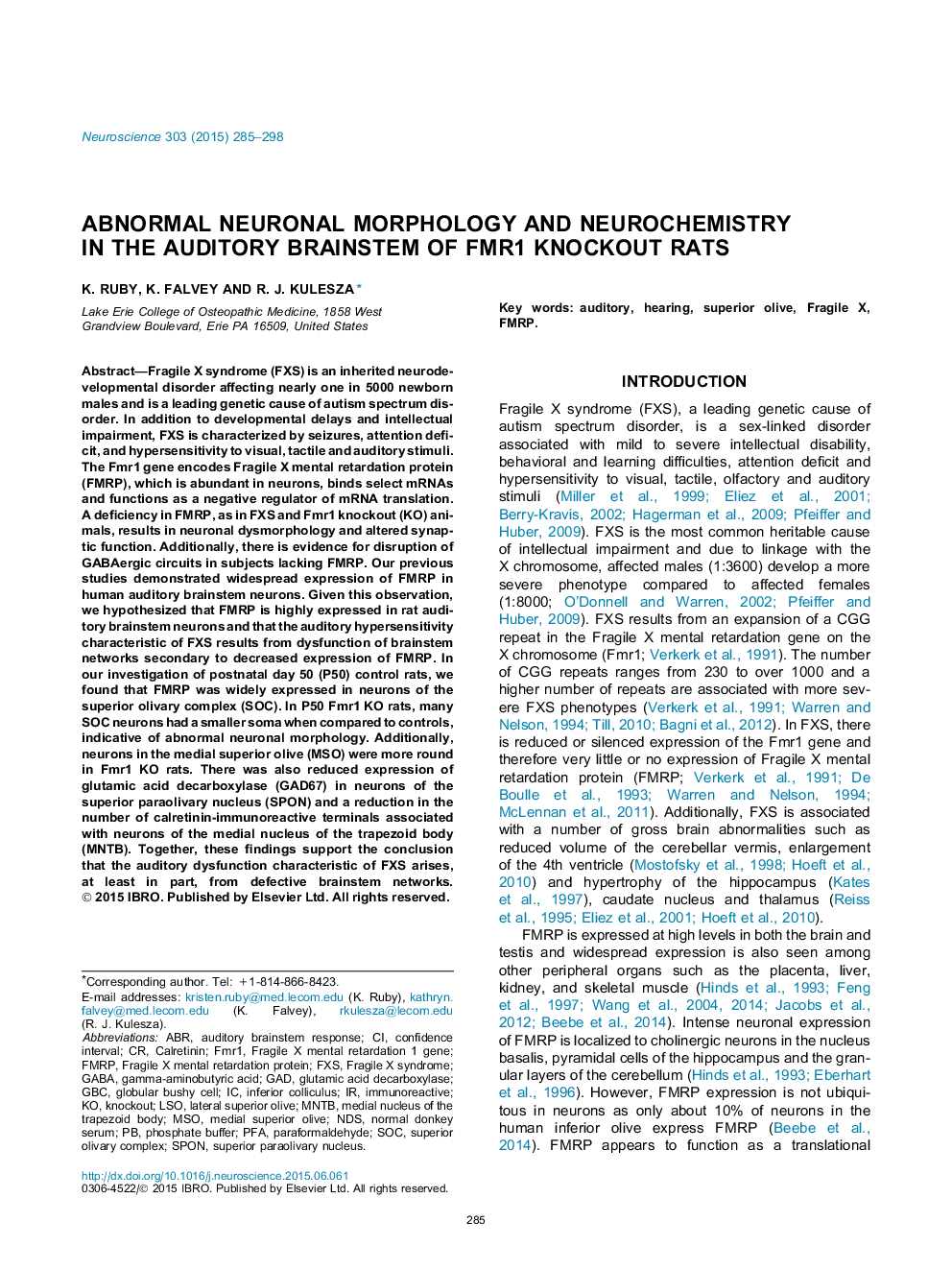| کد مقاله | کد نشریه | سال انتشار | مقاله انگلیسی | نسخه تمام متن |
|---|---|---|---|---|
| 6271889 | 1614773 | 2015 | 14 صفحه PDF | دانلود رایگان |

- FMRP is expressed by the majority of neurons in the SOC of the rat.
- FMRP is expressed in a topographic gradient in the MNTB and LSO.
- In Fmr1 KO rats, neuronal cell bodies are smaller in the MSO, MNTB and SPON.
- In Fmr1 KO rats, there is less GAD67 in the SPON.
- In Fmr1 KO rats, there are fewer calretinin-positive terminals in the MNTB.
Fragile X syndrome (FXS) is an inherited neurodevelopmental disorder affecting nearly one in 5000 newborn males and is a leading genetic cause of autism spectrum disorder. In addition to developmental delays and intellectual impairment, FXS is characterized by seizures, attention deficit, and hypersensitivity to visual, tactile and auditory stimuli. The Fmr1 gene encodes Fragile X mental retardation protein (FMRP), which is abundant in neurons, binds select mRNAs and functions as a negative regulator of mRNA translation. A deficiency in FMRP, as in FXS and Fmr1 knockout (KO) animals, results in neuronal dysmorphology and altered synaptic function. Additionally, there is evidence for disruption of GABAergic circuits in subjects lacking FMRP. Our previous studies demonstrated widespread expression of FMRP in human auditory brainstem neurons. Given this observation, we hypothesized that FMRP is highly expressed in rat auditory brainstem neurons and that the auditory hypersensitivity characteristic of FXS results from dysfunction of brainstem networks secondary to decreased expression of FMRP. In our investigation of postnatal day 50 (P50) control rats, we found that FMRP was widely expressed in neurons of the superior olivary complex (SOC). In P50 Fmr1 KO rats, many SOC neurons had a smaller soma when compared to controls, indicative of abnormal neuronal morphology. Additionally, neurons in the medial superior olive (MSO) were more round in Fmr1 KO rats. There was also reduced expression of glutamic acid decarboxylase (GAD67) in neurons of the superior paraolivary nucleus (SPON) and a reduction in the number of calretinin-immunoreactive terminals associated with neurons of the medial nucleus of the trapezoid body (MNTB). Together, these findings support the conclusion that the auditory dysfunction characteristic of FXS arises, at least in part, from defective brainstem networks.
Journal: Neuroscience - Volume 303, 10 September 2015, Pages 285-298